Never Trust What You Read
The three things often cited as certain in life are birth, death and change. Change or adaptation is one of the most fascinating aspects of natural history for me. The books we read cite so many narrow habitat orders “the Robin nests in low bushes”, “the Swallow nests in barns”. It’s gives me endless pleasure watching birds break those rules.
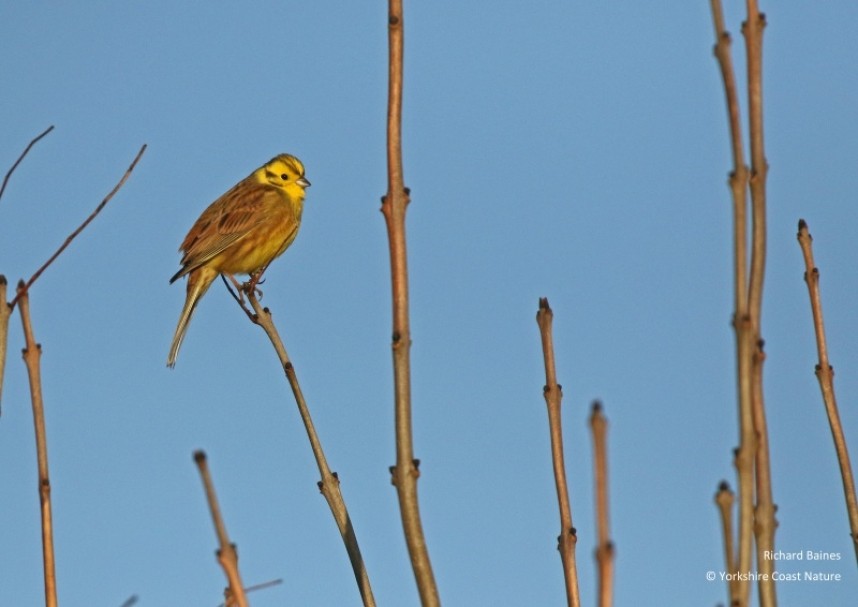
Yellowhammer (male) © Richard Baines
Yellowhammers are often referred to as farmland birds. Look out for them around hedgerows and fields, say both old and new field guides. But if you venture into the clearings of the Great Yorkshire Forest in the North York Moors National Park during spring and listen carefully you will hear many renditions of their famous song ‘a little bit of bread and no cheese’.
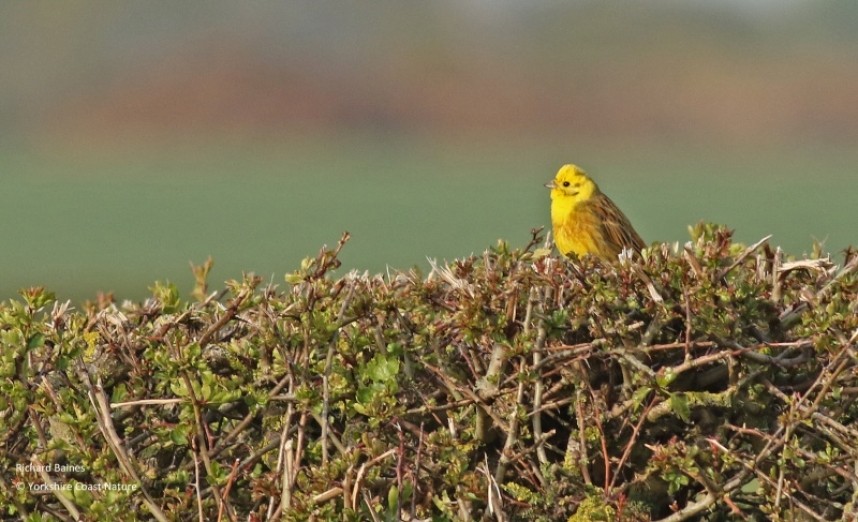
Yellowhammer (male) © Richard Baines
Yellowhammers have been forest glade birds for a long time, maybe thousands or millions of years. They love forest edges, open scrubby habitats with thicket stage tree and shrub growth. When we think carefully about their evolution, we realise they have only adapted to hedgerows since we have had hedgerows which is a very short time in the evolution of the species.
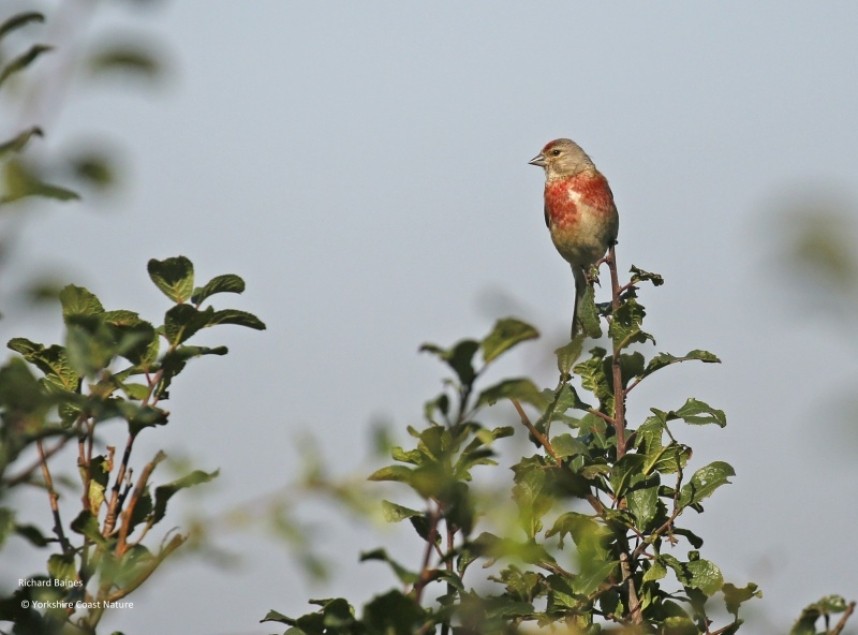
Common Linnet (male) © Richard Baines
Where there is a good range of low scrub and/or gorse look out for another forest clearing bird often added to the farmland suite of birds the Common Linnet. In the spring male Linnets are a fine sight with their rose-pink chest and grey head.
Both of these birds broke out of forest clearings and into farmland when a new opportunity arose. Hedges were first planted systematically in the 13th century but we don’t know how long it took yellowhammers and linnets to adapt. I would guess fairly quickly especially if their population was already high.
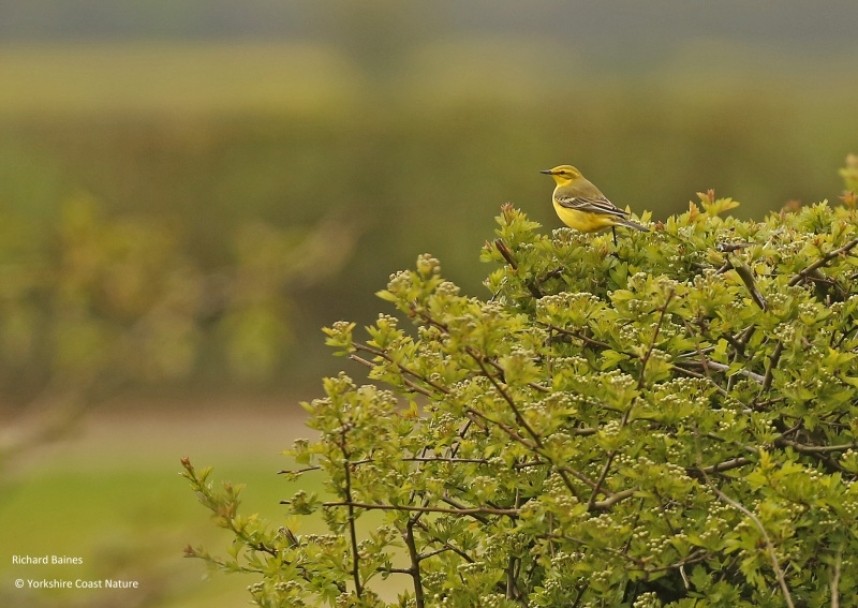
Yellow Wagtail (male) © Richard Baines
Farmland attracts many songbirds searching for habitats similar to wilder landscapes where they once thrived. One of the big changes I have noticed belongs to the sunshine bird, the impressive Yellow Wagtail. They were historically labelled as nesting in water meadows or wet grassland. In our eastern part of Yorkshire, I regularly see them breaking those rules by singing and carrying food into arable crops such as winter wheat and occasionally spring beans.
This adaptation must surely be due to the dramatic loss of wet grasslands and water meadows, it’s the usual case of adapt or die. Having chosen the habitat most similar to their semi-natural grasslands the biggest problem now is how can they find enough insect food in a pesticide ridden crop to make the change work. In many cases they must depend on nearby grassland with livestock, puddles on farm tracks or muck and water in farmyards to find their food. It would be very sad to see yellow wagtails vanish. When a male yellow wagtail drops
in front of me, at point blank range it really feels like a piece of the sun or a jewel from Africa has appeared, always a real wow moment.
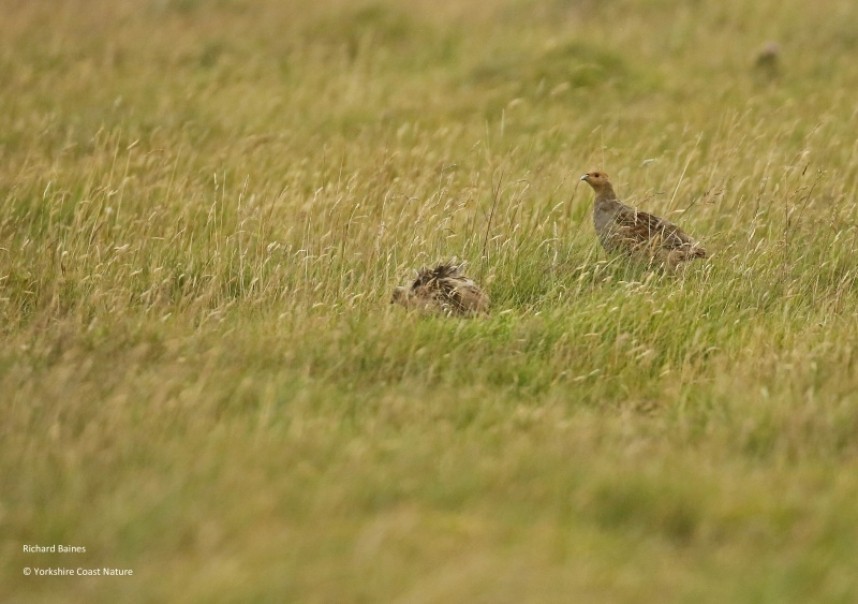
Grey Partridge (male and female) © Richard Baines
Around the drier grassland edges and open fields where Yellow Wagtails used to thrive, another two birds often added to the farmland list find their wilder homes. Grey Partridge and Barn Owl are essentially grassland birds which have had to adapt to farmland as their grasslands have vanished. On a recent bird survey on the edge of a moorland in the Yorkshire Dales where the heather gave way to chunky semi-natural grassland, I found a male and female Grey Partridge. It was a lovely moment to see them in their real natural habitat, open and wild with plenty of tussocks to hide behind and I would imagine a rich supply of insect food for their soon to be born chicks.
The next time you’re in a book shop, old or new, pick up a bird book and see if you can find some of these narrow habitat labels and then seek out the rule breakers!
Richard Baines YCN



 Back to Blog
Back to Blog
